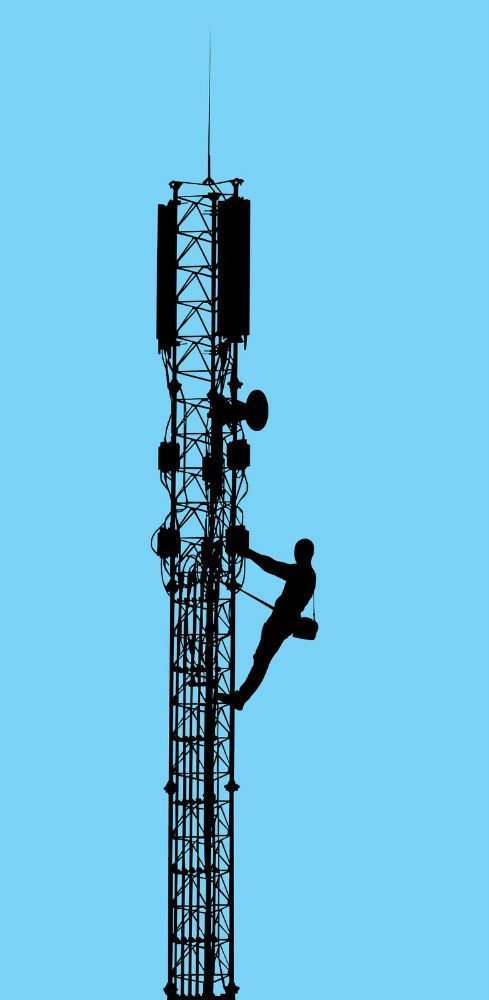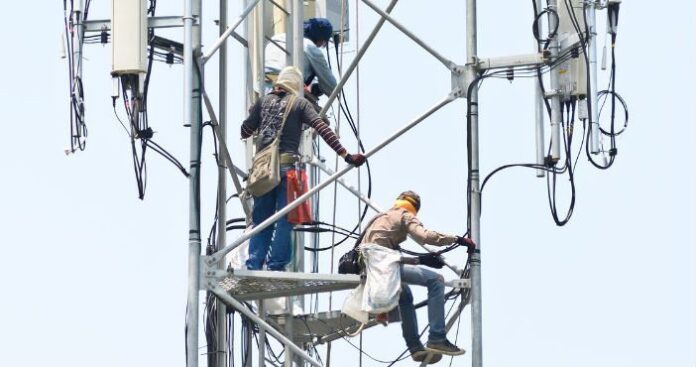The adrenaline of heights is something you relish. Hard, physical activity in a job is something you enjoy. You’ve seen the gravity-defying photos of a tower climber perched atop a 100-foot tower and asked yourself, “How do I become a tower climber?”
It’s a question that pops up frequently over the course of writing about tower industry news each week. Based on interviews with companies that hire climbers, such as Verticom, Global Recruiters of Blackhawk and TelForce Group, as well as working tower climbers themselves, here’s a helpful guide to put you on the path to becoming a tower climber, or “tower-dawg” as they affectionately call themselves.
Experience and background
Higher education typically isn’t a large concern in a tower climber position. High school is usually the minimum requirement. If you plan to do more than general tower climbing and repair, such as RF maintenance, then an RF or a mechanical engineering degree may be required. Carefully check the job posting to see if this is required. Far more important than education is the ability to pass a background check and have a valid driver’s license.
If you don’t have tower climbing experience, then what sort of background would help? Construction experience is a big plus, especially if it involved scaffolding or working at heights at all. Similarly, work at heights with wind turbines, ships, or electrical also looks good on a resume. Companies and recruiters also like to see military experience. Not only does it show commitment and the ability to work hard, it also shows teamwork and leadership qualities, all of which are important in being a tower climber.
The background and experience required heavily depends on the company. Many companies don’t even bother with non-experienced tower climbers. Others, however, like hiring inexperienced people because it means they’re not already stuck in their ways of performing various job-related tasks. A fresh recruit can be trained specifically on how that company prefers various job tasks to be performed. While there may be standard ways of going about completing a task, no two companies or climbers do it quite the same.
Training and certifications
Unsurprisingly, training and certifications are some of the most crucial aspects of being a tower climber. Knowing how to properly use your safety equipment and what to do in the event of an emergency can be the difference between life and death, or at the very least can prevent injuries and potential citations for the company. Getting your certifications before being hired is a great step to take because it shows initiative and a commitment to working in the industry.
“The main thing to know is that the employer is the one who provides training. Even if you’re already trained they are usually required to re-train you,” said Paul Harris, President of Global Recruiters of Blackhawk.
 Certifications usually include some or all of the following:
Certifications usually include some or all of the following:
- OSHA/OSHA 10 Hour for Construction (One-and-a-half day class, cards do not expire).
- Gravitec/ComTrain Authorized Climbing and Rescue (Two-day class, expires one year from date of completion).
- American Red Cross First Aid/CPR/AED (One-day class, expires two years from date of completion).
- RSI RF Awareness (one-half-day class, expires one year from date of completion).
- Crosby Rigging (Three-to-four-hour class, internally generated authorization, expires two years from date of completion).
There are several places you can get tower climber training and certifications. Safety One Training, based in Colorado, is a great place to get training. The Federal Communications Commission announced recently that it will host a tower tech apprenticeship program in the near future to ready the next generation of tower climbers. Wireless Estimator also has a handy calendar listing upcoming training and certifications for tower climbers across the U.S., so definitely visit that if you’re planning on getting certification in the near future.
Equipment and climbing gear
The Occupational Safety and Health Administration regulations require employers to provide all safety equipment, also known as personal protection equipment or PPE. This includes safety harnesses, belts and ropes for climbing the tower safely. Actual tools used during your job, such as wrenches, saws and capstan hoists are usually provided by the company. According to some anecdotal evidence from tower climbers though, many smaller sub-contractor sort of situations require you to have your own tools. Like pursuing your own certifications ahead of employment, having your own tools also shows a commitment to the industry as your chosen profession, even if the employer ends up providing all of the tools.
That’s it for part one of our exploration of how to become a tower climber. Join us next week when we discuss the work schedule, benefits, pay, where to look for jobs and how to present yourself as the best possible candidate you can be.
If there’s anything you think we missed in discussing education, experience, training, and equipment for tower climbers, let us know in the comments!
Looking for tower climber positions? Check out Towercrews.net
Featured Image Copyright: suradech / 123RF Stock Photo
Story Image Copyright: alexdemeshko / 123RF Stock Photo

